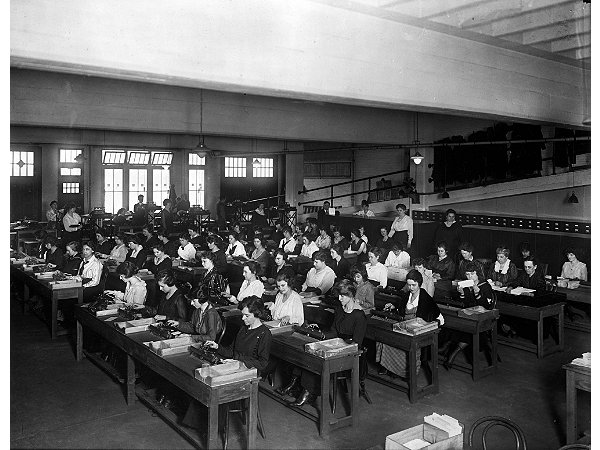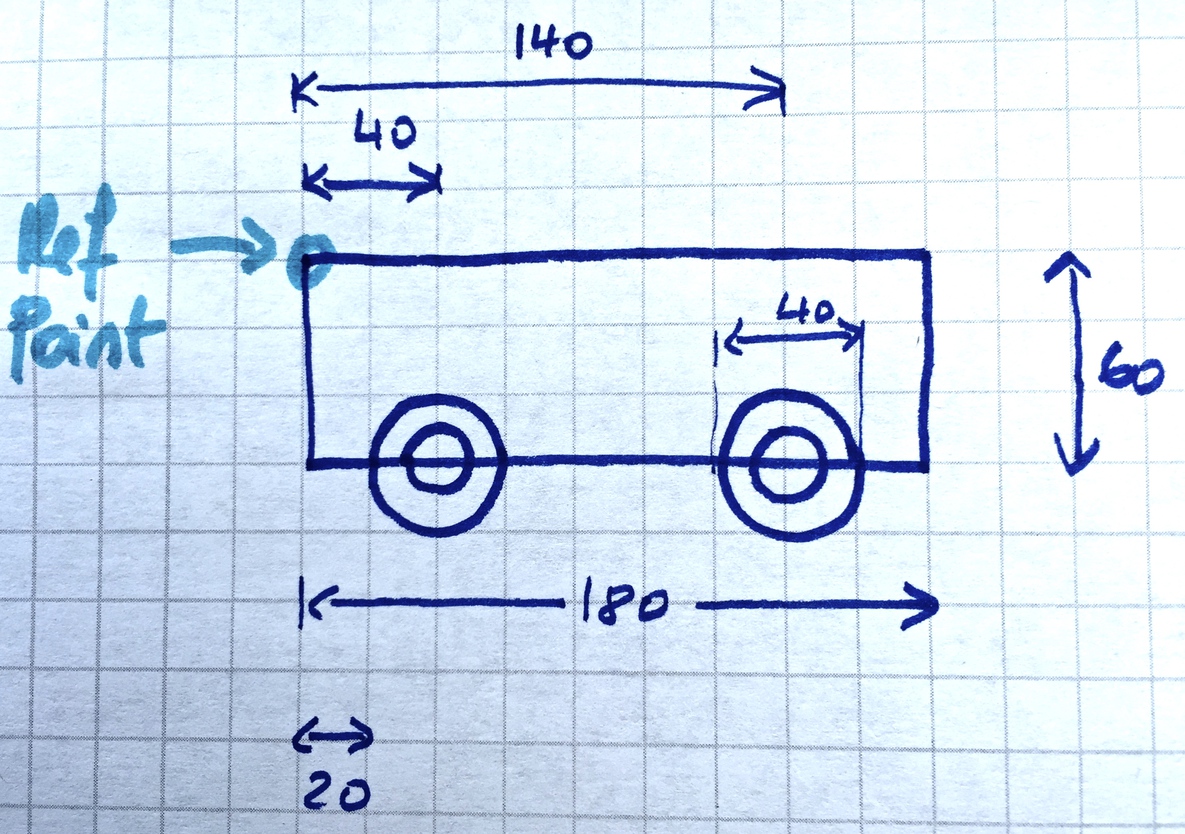Difference between revisions of "CSC111 Class Page 2015b"
(→ ) |
(→Misc) |
||
| Line 696: | Line 696: | ||
==Misc== | ==Misc== | ||
<br /> | <br /> | ||
| − | * | + | * When you work in pairs during the labs, or on homework assignments, you need to follow the protocol for 'pair programming' as discussed in [http://maven.smith.edu/~jfrankli/111s08/pairProgramming2000.pdf this article]. |
* Video talks on Python: | * Video talks on Python: | ||
| Line 702: | Line 702: | ||
<br /> | <br /> | ||
| + | ==Maps of Smith College== | ||
<br /> | <br /> | ||
| + | This section contains various maps to be used in the Liberal Arts Module (LAM). <font color="magenta">If you want to use one of these images, and want the original, click twice on the image, until you get it by itself, full size, in your browser. Then you can either right click or control click on it to save it to your computer.</font> | ||
<br /> | <br /> | ||
| + | =Map from GIS Center, Smith College= | ||
<br /> | <br /> | ||
| + | <center>[[Image:GISMapSmithCollege.jpg|800px]]</center> | ||
<br /> | <br /> | ||
| + | =Edited Map, Smith College, PNG format= | ||
<br /> | <br /> | ||
| + | <center>[[Image:GISMapSmithCollege.jpg|800px]]</center> | ||
| + | <br /> | ||
| + | =Edited Map, Smith College, <font color="magenta">GIF</font> format= | ||
| + | <br /> | ||
| + | <center>[[Image:GISMapSmithCollege.gif|800px]]</center> | ||
| + | <br /> | ||
| + | |||
<br /> | <br /> | ||
<br /> | <br /> | ||
Revision as of 11:22, 13 November 2015
--D. Thiebaut (talk) 11:12, 24 August 2015 (EDT)
| Week 1 Sept 7 |
Topics: Introduction, Python, Idle, Piazza, Moodle submission Lab/Hw Reading - Wednesday
- Syllabus
- Expectations
- Pair Programming (video to watch on your own)
- A feel for coding in Python
- Lecture Notes
- Friday
- Review of the lab
- Variables
- assignment,
- variable names
- camelCase notation
- Exercises
- Lecture Notes
- Preparation for Lab 1: you may want to do this before the first lab.
- Lab 1
- Homework 1
- Solution programs can be found at the end of the lab and homework pages
- Read Chapter 1 in Zelle (textbook)
- Read the article on Pair Programming
- Wednesday
| Week 2 Sept. 14 |
Topics: Chapter 2: variables, definite loops, input Lab/Hw Reading - Monday: (Lecture presented by Prof. Joe O'Rourke)
- Variables: simultaneous assignment
- Where do variables live?
- Programming: from problem to solution: an iterative process
- definite loops:
- looping through items in a list
- the range() function: allows iteration through various lists of numbers
- Wednesday
- Review & Prep for Lab 2
- Exercises
- Lecture Notes
- Programs developed in class
- Friday
- Numbers of the day:
- Printing, and the idea of emptiness: "" and []
- Programming exercises from the Lecture Notes
- Programs developed in class
- Lab 2
- Homework 2
- Solution programs can be found at the end of the lab and homework pages
- Read Chapter 2 in Zelle.
- Monday: (Lecture presented by Prof. Joe O'Rourke)
| Week 3 Sept. 21 |
Topics: Arithmetic operators, math functions, main(). Lab/Hw Reading - Monday:
- Finish the grade program from Friday ( Programs developed in class)
- 4 minutes from Grier's video: When computers were human. Start at time=28m12s.

Women at work tabulating during World War II (Shorpy)
- Operators: * / + - ** // % abs()
- The type() function
- tellerMachine.py example.
- Formatting numbers (see Section 5.8.2 in Zelle), and example program
- Lecture Notes
- Programs developed in class
- Wednesday
- Review the tellerMachine.py program. Review a student's solution using a loop.
- Printing formatted integers and floats with the { } format.
- Review the bar-graph problem and use the { } format to print the box.
- Program organization: from now on, we will be using a main() function.
- int(), round(), float(), abs() ==> the idea of robustness
- Rule for all programs: add a blank line between input section and output section.
- Accumulating results in loops. Example: computing the average age of students in the class.
- Accumulating strings in a loop: Generage a string of 5 groups: "**--**--**"
- Programs developed in class
- Friday
- Monday's class will be on video... stay tuned to Piazza
- Example of Midterm Exam: Warning: some of the questions refer to material that hasn't be covered as of 9/25/15, but will have been covered by the time the test is administered.
- Back to Accumulating results: debugging a loop
- Debugging the program printing alternating patterns
- Review Challenge #7 from Lab 3
- Programs developed in class
- Lecture Notes & (exta)
- Lab 3
- Homework 3
- Solution programs can be found at the end of the lab and homework pages
- Read Chapter 3 in Zelle.
| Week 4 Sept. 28 |
Topics: Lab/Hw Reading - Monday:
- Video class today. The class is covered in 3 different videos. Click on the video icons below, from left to right, please!
- Wednesday
- Review & Q&A
- Strings are immutable
- String methods
- On-line documentation: docs.python.orgs
- Exercises
- Programs developed in class
- Lecture Notes
- Friday
- Split()
- Functions
- Lecture Notes
- A video with some words about real numbers and why they behave strangely:

- Programs developed in class
- Lecture Notes
- Lab 4
- Homework 4
- Solution programs can be found at the end of the lab and homework pages
- Read Chapter 6 in Zelle
| Week 5 Oct 5 |
Topics: Functions, Files. Lab/Hw Reading - Monday:
- Functions, review
- Functions returning values
- Exercises
- Writing robust programs: they don't crash!
- Lecture Notes
- Programs developed in class
- Wednesday
- Mountain Day?
- Friday
- Review: Functions, parameters, returned values
- Exercises
- Programs developed in class
- Lecture Notes
- We are still working with material from Chapter 6.
| Week 6 Oct. 12 |
Topics: Lab/Hw Reading - Monday: Fall Break
- Wednesday
- Files: reading and writing text files
- Processing text information (playing with Sherlock)
- Lecture Notes
- Programs developed in class
- Friday: Midterm Exam
- Lab 6
- No homework this week
| Week 7 Oct 19 |
Topics: Processing Files Lab/Hw Reading - Monday:
- Finish Dynamic Web Page example
- The IF statement
- Boolean values: True and False
- Wednesday
- Boolean operators: and, or, and not
- Graphics
- Graphics library
- Simple graphic programs
- Friday
- Graphic objects: everything is an object!
- Measuring distances between points on the graphic window.
- Something fun: Eliza
- Chapter 7 in Zelle
- Documentation for the graphics.py library
| Week 8 Oct. 26 |
Topics: Lab/Hw Reading - Monday:
- Review if statements and Boolean variables
- Exercises on boolean variables and boolean functions
- is there a negative number in a list of numbers?
- count the number of negative numbers in a list of numbers
- Back to Eliza
- Lecture Notes
- Wednesday
- Exact and Inexact Matching Algorithms
- Break and Continue
- Lecture Notes
- Friday
- Exercise with While loop
- Programming patterns for looking at text data (review of Lab 8)
- Processing Text
- Man in the Hole (Kurt Vonnegut, Matthew Jokers)
- Memory Project (Tim O'Brien, Wordle)
- Indefinite loops are covered in Chapter 8 in Zelle.
| Week 9 Nov. 2 |
Topics: Exceptions, Classes, and Objects Lab/Hw Reading - Monday:
- Exceptions
- Classes and Objects
- Programs developed in class
- Lecture notes
- Wednesday
- Cats, cats, cats
- Creating a Cat class
- Default string representation: __str__()
- A list of cats
- Reading cats from a CSV file
- Searching a list of objects
- Friday
- Object-Oriented Graphics
- Creating a wheel class
- Moving the wheel
- Creating a car class
- Moving the car
- A list of cars...
- Horse objects. In the "Digital Horses" video, you get to see how the animators for the movie The Lord of the Rings create software objects to represent horses. In some parts of the video, below, you see that in some cases, horses are a collection of 3D shapes that are connected to each other, and move together around articulation points. This should remind you of how we built a car class around geometrical 2D objects.
- The video below shows similar examples of 3D objects, and lists of 3D objects where objects have their own behavior (the same way that our car objects have their own speed and direction of movement).
- Programs developed in class
- Lecture notes
- (You can go to this site to print graph paper)
- Description of Graphics Library objects
- Section 7.4 in Zelle, on Exceptions
- Chapter 10: Defining Classes
| Week 10 Nov 9 |
Topics: Image Processing Lab/Hw Reading - Monday:
- Image processing
- Displaying gif images
- Sweep through an image: vertical sweep, horizontal sweep
- Changing the color of a pixel
- Changing the color of all the pixels of an image
- Grey scales
- Saturation
- Lecture Notes
- Programs developed in class
- Wednesday
- Mirroring
- Displaying a chessboard
- Creating the graphics for a game of checkers
- Lecture Notes
- Programs developed in class
- Friday
- No class today (conference in Seattle), but there is a video lecture to watch on your own... Stay tuned!
- Slides for Video Presentation
- DT's video presentation
- Page with Prof. Helene Visentin's presentation
- Quiz: go to Moodle, and look for the Week 10 LAM section.
| Week 11 Nov 16 |
Topics: Lab/Hw Reading - Monday:
- Wednesday
- Friday
- Lab
- Homework
| Week 12 Nov 23 |
Topics: Lab/Hw Reading - Monday:
- Wednesday: Thankgiving Break
- Friday: Thankgiving Break
- Lab
- Homework
| Week 13 Nov 30 |
Topics: Lab/Hw Reading - Monday:
- Wednesday
- Friday
- Lab
- Homework
| Week 14 Dec 7 |
Topics: Lab/Hw Reading - Monday:
- Wednesday
- Friday
- Lab
- Homework
| Week 15 Dec 14 |
Topics: Lab/Hw Reading - Monday: Last Class
- Final Exam
Links and Resources
Graphics
- Zelle's graphic library can be found here
- A page with color names supported by the graphics library.
On-Line Python books
- disocovermagazine.com blog. Check out the answers posted by many readers. They contain some interesting links that you may find useful!
Python keywords
- The list of all the reserved words of the Python language
- and del for is raise assert elif from lambda return break else global not try class except if or while continue exec import pass yield def finally in print.
Python Programs in Textbook
- All the programs of Zelle's Python textbook
Misc
- When you work in pairs during the labs, or on homework assignments, you need to follow the protocol for 'pair programming' as discussed in this article.
- Video talks on Python:
Maps of Smith College
This section contains various maps to be used in the Liberal Arts Module (LAM). If you want to use one of these images, and want the original, click twice on the image, until you get it by itself, full size, in your browser. Then you can either right click or control click on it to save it to your computer.
Map from GIS Center, Smith College

Edited Map, Smith College, PNG format

Edited Map, Smith College, GIF format







